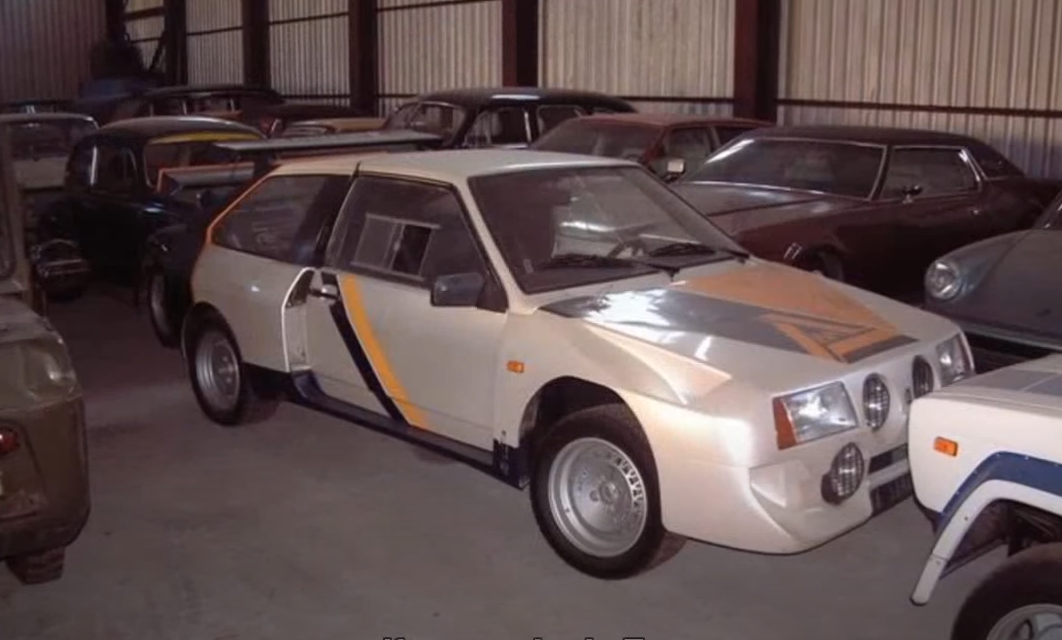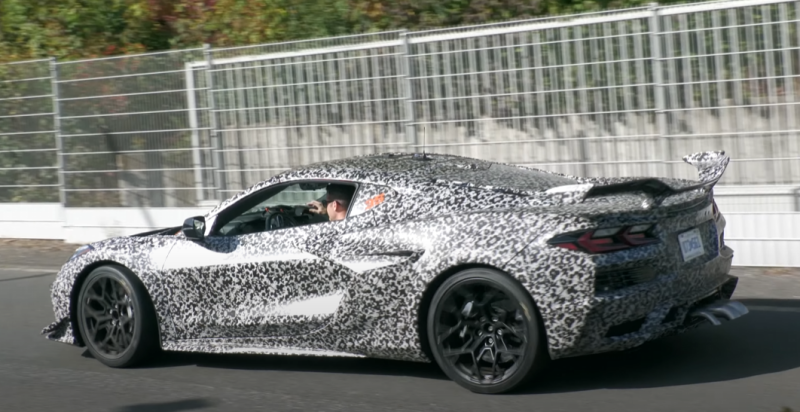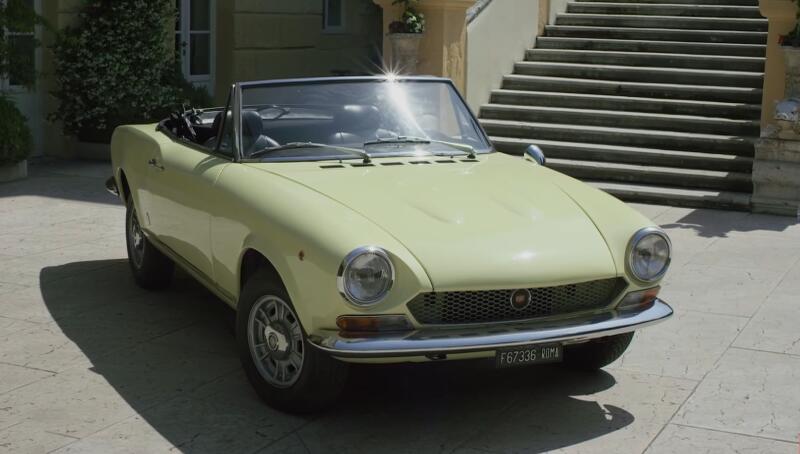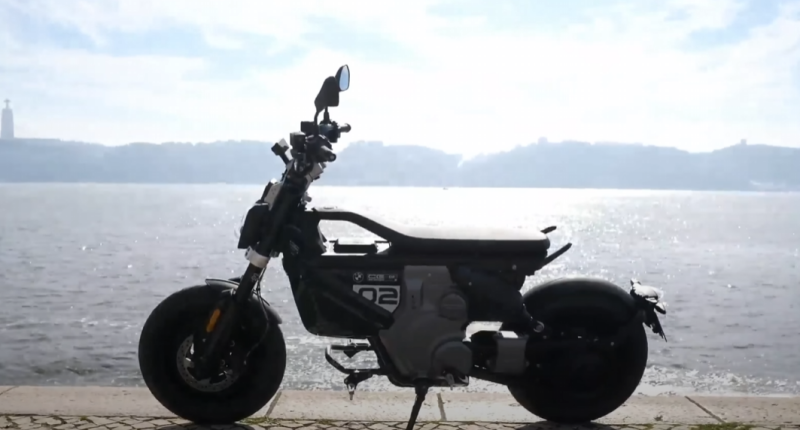The most modern Ladas from the 80s were the fastest, but they also have 100 hp. With. could only dream. However, in the hands of professional athletes, the factory VAZ-2108 turned almost into fireballs. At least, to the Soviet "ordinary" drivers, they seemed just like that. A hundred "horses" were often squeezed out of them, sometimes more.
But today we will talk about a real sports car - this is LADA EVA. This car was outwardly similar to the VAZ-2108, but developed unthinkable for the second half of the 80s 300 hp. With.
 VAZ-2108? Only at first glance. Photo: Youtube.com
VAZ-2108? Only at first glance. Photo: Youtube.comAnd his engine was quite a Soviet one - from the "six". Of course, after a thorough revision.
Cooler than famous sports cars
The Soviet Union has always been famous for the abundance of artisans, so LADA EVA can be suspected of a terrible "self-propelled gun" assembled by some Kulibin. But no, this car was assembled officially, at the Vilnius Vehicle Factory. There was such an enterprise in the USSR. Then it was renamed the Experimental Vilnius Automobile Plant, hence, by the way, the abbreviation EVA in the name of the car, the hero of our today's article.
So what made the Soviet supercar stand out from the competition?
Here are their parameters for comparison:
✅ Porsche 911 Carrera CS produced 231 hp. With.
✅ The BMW "five" in the back of the E28 and in the legendary M5 version was more powerful - 286 hp. With.
✅ GAZ-24-24, the “catch-up”, which only a few knew about, developed 8 hp with a V195. With.
And here, against their background, the turbocharged "eight" with its 300 hp. With. Such parameters for a Soviet motorist were something out of a fantasy series.
Who is Stasis Brundza
The emergence of LADA EVA, and the Experimental Vilnius Automobile Plant, is associated with one person. If not for Stasis Brundza, none of this would have happened. A legendary Soviet racing driver and sports car collector, he started racing at 16 in a humpbacked ZAZ-965.
 "Monster" for 300 liters. With. conquers the track. Photo: Youtube.com
"Monster" for 300 liters. With. conquers the track. Photo: Youtube.comThen there were 10 years devoted to "Moskvich" and even more - "Zhiguli" and "Ladam". Thanks to this racer abroad, they learned about new Soviet cars, and their victories in the rally increased sales at times.
Especially for Stasys Brundza and his team in Vilnius, at first they allocated a workshop for finalizing production cars. The plant began to function fully in 1990, having managed to make only a couple of hundred sports cars based on the VAZ-2108 and VAZ-2105 before the collapse of the USSR.
Most of them were sold abroad back in those days. But all LADA EVAs, and there were 4 of them, were produced before 1990.
Appearance of the Soviet supercar
As it turned out, it was not in vain that the VAZ-2108 was helped by specialists from the German company Porsche. This model has a huge sporting potential, embodied in the budget class. That is why the "eight" was chosen as the basis for the creation of LADA EVA.
 Rear engine layout. Photo: Youtube.com
Rear engine layout. Photo: Youtube.comThe car was thoroughly redesigned, leaving only two side doors, optics and a windshield from the original. Everything else Stasis Brundza and his team developed on their own, focusing on the latest trends in motorsport. The chassis was redesigned so much that LADA EVA became rear-wheel drive.
A spatial safety cage was hoisted on the VAZ-2108. The front and back were made of fiberglass - these parts leaned back in the best traditions of the genre.
All new body parts were developed with the help of specialists from the experimental sports aviation plant. The assembled prototype was blown in a wind tunnel at the NAMI test site.
The prototype debuted in 1987. Then all the Soviet media trumpeted about it.
Engine features
The LADA EVA power unit was placed in front of the rear axle. Interestingly, this motor was created on the basis of a standard engine from the VAZ-2106. The "six" power unit was chosen for two reasons - it turned out to be the most powerful in the line at that time and was intended for rear-wheel drive.
 The same legendary engine. Photo: Youtube.com
The same legendary engine. Photo: Youtube.comIn fact, the cylinder block was left from the “native” engine, and even that was squandered to a volume of almost 1,9 liters. Everything else is tuning, well known to modern customizers, but usually inaccessible to the Soviet Union. It was lucky that the plant ended up in Vilnius - the LSSR traditionally enjoyed great benefits due to its geographical location.
We managed to get spare parts for the LADA EVA engine from the world's leading manufacturers. First of all, the carburetor was replaced with fuel injection from Lucas. VAZ pistons gave way to forged parts. Each cylinder received 4 valves, new combustion chambers and a lubrication system appeared. Naturally, the engine was turbocharged, otherwise it would hardly have been possible to squeeze such power out of it.
300 l. With. – it was far from the limit. The design of the power unit provided for a huge margin of safety.
Even faster and inglorious ending
Tests of the LADA EVA prototype showed that it has every chance of becoming the leader of the competition in Group B, for which it was created. Inspired by the success of the team of racing engineers with redoubled zeal set to develop an improved model. At the same time, several more 300 hp cars were being assembled. With.
 Stylish sports car and painfully familiar appearance. Photo: Youtube.com
Stylish sports car and painfully familiar appearance. Photo: Youtube.comA year later, the LADA EVA S-PROTO project was ready. This car was supposed to get all-wheel drive, and it was planned to squeeze 350 hp out of its engine. With. That's just the circumstances were unsuccessful - the FIA banned the competition of group B. Accordingly, the point in further development was lost.
If by that time the Soviet Union had already collapsed, it is possible that LADA EVA was produced and sold abroad. But they did not close the enterprise, transferring it to conditionally civilian sports models, like LADA 2105 VFTS and 2108 Rally.
After the collapse of the USSR, the Experimental Vilnius Automobile Plant closed almost immediately. But Stasis Brundza did not abandon his beloved brainchild, keeping two LADA EVA cars in his personal museum. Now they can be seen in Vilnius.
Mark on history
Enthusiast racers managed to prove to the entire vast Soviet Union that, if desired, truly outstanding cars can be created in the country. At the same time, some fantastic financial investments are not needed - a group of enthusiastic people is enough.
LADA EVA has become a symbol of the triumph of the Soviet automobile industry for a whole generation of drivers. Many had posters with this supercar in their garages. Yes, and teenagers also admired the car, which managed to surpass eminent foreign brands.
By the way, the second wave of Soviet tuning was born precisely at the suggestion of the Vilnius Experimental Automobile Plant. In the late 80s, the traditional fringe, "roses" on the knob of the checkpoint, pennies around the perimeter of the windows and "fur" steering wheels among aesthetes were already considered a "collective farm".
 Scheme LADA EVA - maybe someone wants to repeat. Photo: Youtube.com
Scheme LADA EVA - maybe someone wants to repeat. Photo: Youtube.comBut spoilers, arch extensions, "sporty" bumpers - it was cool. They began to be made by cooperatives, which were actively appearing just at that time. These clumsy products, often made in basements, did not give any aerodynamics to cars, but how such cars stood out in the stream! They gathered enthusiastic crowds of children and teenagers around them.
By the way, the sunscreens that were glued to the top of the windshield are from the same opera. Their production at one time was established in almost every city.
LADA EVA is still admired for its technical characteristics. By the way, the “pebble in the garden” of the famous Mitsubishi Lancer Evo is Japanese comrades, it was we who came up with such an abbreviation and it does not mean Evolution at all!










